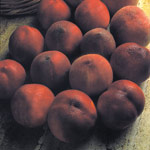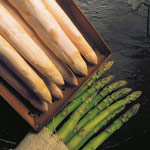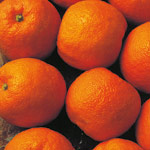
products / citrus fuits
Oranges
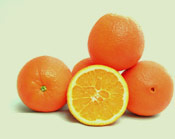 This species is of oriental origin, more specifically from the southeast of Asia, and its introduction into Europe occurred in different stages depending on the variety. First, the Arabs introduced the bitter orange into the Mediterranean region in approximately the 10th century and later, in the 15th century, the sweet variety was brought by Genoese traders.
This species is of oriental origin, more specifically from the southeast of Asia, and its introduction into Europe occurred in different stages depending on the variety. First, the Arabs introduced the bitter orange into the Mediterranean region in approximately the 10th century and later, in the 15th century, the sweet variety was brought by Genoese traders.
The orange is an evergreen tree, with a rounded head, angular branches and green bark, often with axillary thorns. Only rarely does it reach 10 m. of height. Its leaves are oval and shiny and its flowers, the orange blossom, white and fragrant.
It must be pointed out that it is principally produced for its fruit: the orange, basically used for human consumption, is especially recommendable for its rich vitamin C content.
Essential oils are also extracted from the orange.
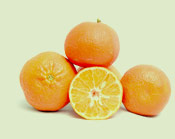 CLEMENTINES
CLEMENTINES
These seem to have originally come from China and Vietnam, and were brought to Europe very late, at the beginning of the 19th century.
They belong to the Rutaceae family, made up of 150 genera with about 1,000 species found in tropical countries and warm regions throughout the world. As a citrus fruit, it is a variety of great economic importance.
An evergreen tree that is 3 or 4 metres high, its shape is rounded with slender branches, green bark and frequently sporting axillary spines that can be hard.
The specific name, delicious, obviously refers to its exquisite fruit with an agreeable and acidic taste, mainly destined for human consumption.
From the bark of the tree is obtained what is called mandarin essential oil, which is also used in perfumes and for its aroma in liqueurs, sweets and medicines.
GRAPEFRUIT
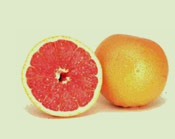 It originated as a natural cross between the sweet orange and the pummelo which occurred in Barbados (West Indies). It is an evergreen tree that usually measures between 3 and 5 metres tall and does not usually have thorns.
It originated as a natural cross between the sweet orange and the pummelo which occurred in Barbados (West Indies). It is an evergreen tree that usually measures between 3 and 5 metres tall and does not usually have thorns.
It belongs to the Rutaceae family, which is a medium sized one composed of 150 genera and about 1000 species spread throughout tropical countries and warm regions all over the world. As a citrus fruit, it is a variety of great economic importance
It is produced mainly to be consumed as a fresh fruit (with a tasty sweet or slightly bitter juice depending on the variety) although it can also be cultivated as an ornamental tree.
The Burgundy variety is grown very little today. On the other hand the most frequently cultivated variety worldwide is currently the Ruby. It is a favourite in the European market as are other varieties of the red grapefruit.
Stature: The grapefruit tree is of reduced stature. Its trunk is short and its sprouts are of a purple colour. It is hardly thorny at all.
Leaves: The leaves are medium to large sized, somewhat fuzzy, with big wings and a typical aroma.
Flowers: They are big, greenish and with reduced stamens.
Fruit: It is called Hesperidio and is made up of the following parts: exocarp (flavedo; with vesicles that contain essential oils), a thick mesocarp (albedo; pompous and of a white colour), and white, pink or red endocarp (pulp: presenting trichomes with juice). This fruit is large and of a somewhat squashed round shape. On its surface there are prominent oil glands.
